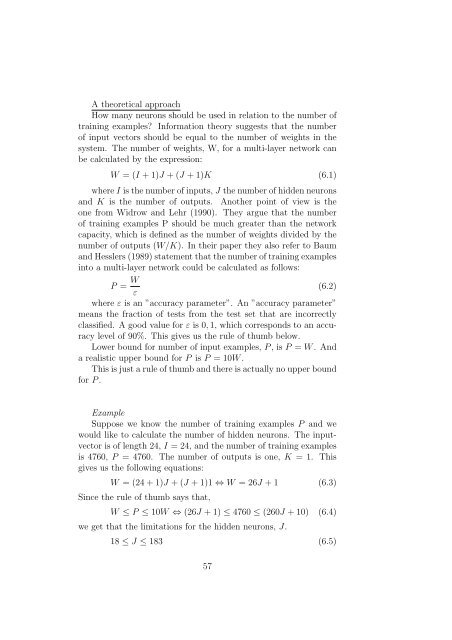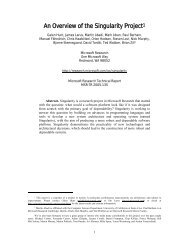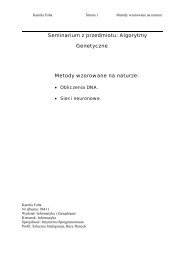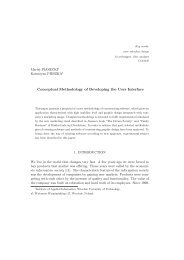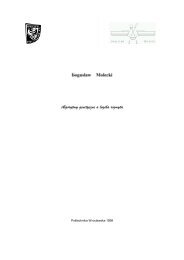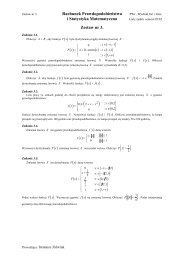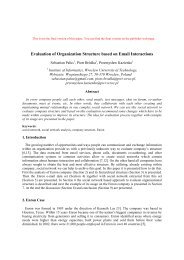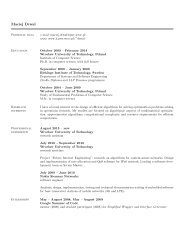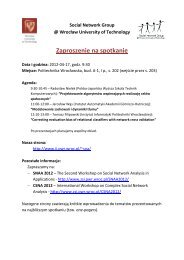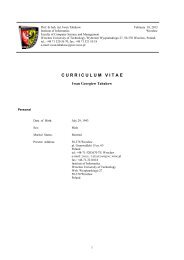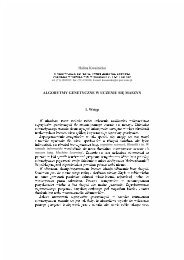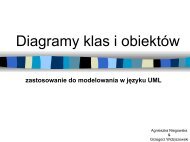Chapter 2 Introduction to Neural network
Chapter 2 Introduction to Neural network
Chapter 2 Introduction to Neural network
You also want an ePaper? Increase the reach of your titles
YUMPU automatically turns print PDFs into web optimized ePapers that Google loves.
A theoretical approach<br />
How many neurons should be used in relation <strong>to</strong> the number of<br />
training examples Information theory suggests that the number<br />
of input vec<strong>to</strong>rs should be equal <strong>to</strong> the number of weights in the<br />
system. The number of weights, W, for a multi-layer <strong>network</strong> can<br />
be calculated by the expression:<br />
W = (I + 1)J + (J + 1)K (6.1)<br />
where I is the number of inputs, J the number of hidden neurons<br />
and K is the number of outputs. Another point of view is the<br />
one from Widrow and Lehr (1990). They argue that the number<br />
of training examples P should be much greater than the <strong>network</strong><br />
capacity, which is defined as the number of weights divided by the<br />
number of outputs (W/K). In their paper they also refer <strong>to</strong> Baum<br />
and Hesslers (1989) statement that the number of training examples<br />
in<strong>to</strong> a multi-layer <strong>network</strong> could be calculated as follows:<br />
P = W (6.2)<br />
ε<br />
where ε is an ”accuracy parameter”. An ”accuracy parameter”<br />
means the fraction of tests from the test set that are incorrectly<br />
classified. A good value for ε is 0, 1, which corresponds <strong>to</strong> an accuracy<br />
level of 90%. This gives us the rule of thumb below.<br />
Lower bound for number of input examples, P , is P = W . And<br />
a realistic upper bound for P is P = 10W .<br />
This is just a rule of thumb and there is actually no upper bound<br />
for P .<br />
Example<br />
Suppose we know the number of training examples P and we<br />
would like <strong>to</strong> calculate the number of hidden neurons. The inputvec<strong>to</strong>r<br />
is of length 24, I = 24, and the number of training examples<br />
is 4760, P = 4760. The number of outputs is one, K = 1. This<br />
gives us the following equations:<br />
W = (24 + 1)J + (J + 1)1 ⇔ W = 26J + 1 (6.3)<br />
Since the rule of thumb says that,<br />
W ≤ P ≤ 10W ⇔ (26J + 1) ≤ 4760 ≤ (260J + 10) (6.4)<br />
we get that the limitations for the hidden neurons, J.<br />
18 ≤ J ≤ 183 (6.5)<br />
57


